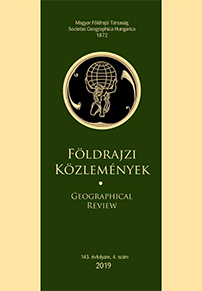Missed Opportunity, Lost Chance? Settlement Success in the Light of Possessing Town Rank
Abstract
Abstract
There are 346 settlements that are legally classified as towns and cities in Hungary, representing more than 10 percent of the pool, while the rate of urban population exceeds 71 percent which value follows rather a western than an eastern pattern. More than a half of the urban settlements have gained their rank since the system changed in 1989. According to both the Act on Municipalities (1990) and the New Municipality Law (2011) the fundamental rights of settlements (municipalities) are equal, regardless of their legal status; none of them are preferred in terms of source allocation. However, historically and during the recent past it has always been and presently it is a prestige to possess or gain the town rank, therefore to gain the desired rank has a distinguished position on the developmental horizon of several villages. This attitude has become more and more important during the centralisation of spatial planning and public administration in the years since 2000 and 2010, which forced some settlements being more proactive in that manner. Some other municipalities have not even dealt with the idea of competing for the town rank; however, their general development level, social composition or built-up environment is unquestionably urban. In the course of the past 15 years, domestic and growingly EU-origin development funds have proved to be the most crucial source of development for the Hungarian municipalities. The present study is investigating if there is any correlation between the successfulness in gaining development funds and the legal status of settlements. The total sum, the structural composition and the per capita value of development funds awarded are analysed in two (legally) different groups of settlements. The main sample is represented by the 182 newest towns of Hungary that gained the town rank between 1989 and 2013, which was contrasted with the values of villages that are found to be urban based on either different statistical figures or results of previous researches.
Copyright (c) 2020 Viola Karsai, András Trócsányi

This work is licensed under a Creative Commons Attribution-NonCommercial-NoDerivatives 4.0 International License.



